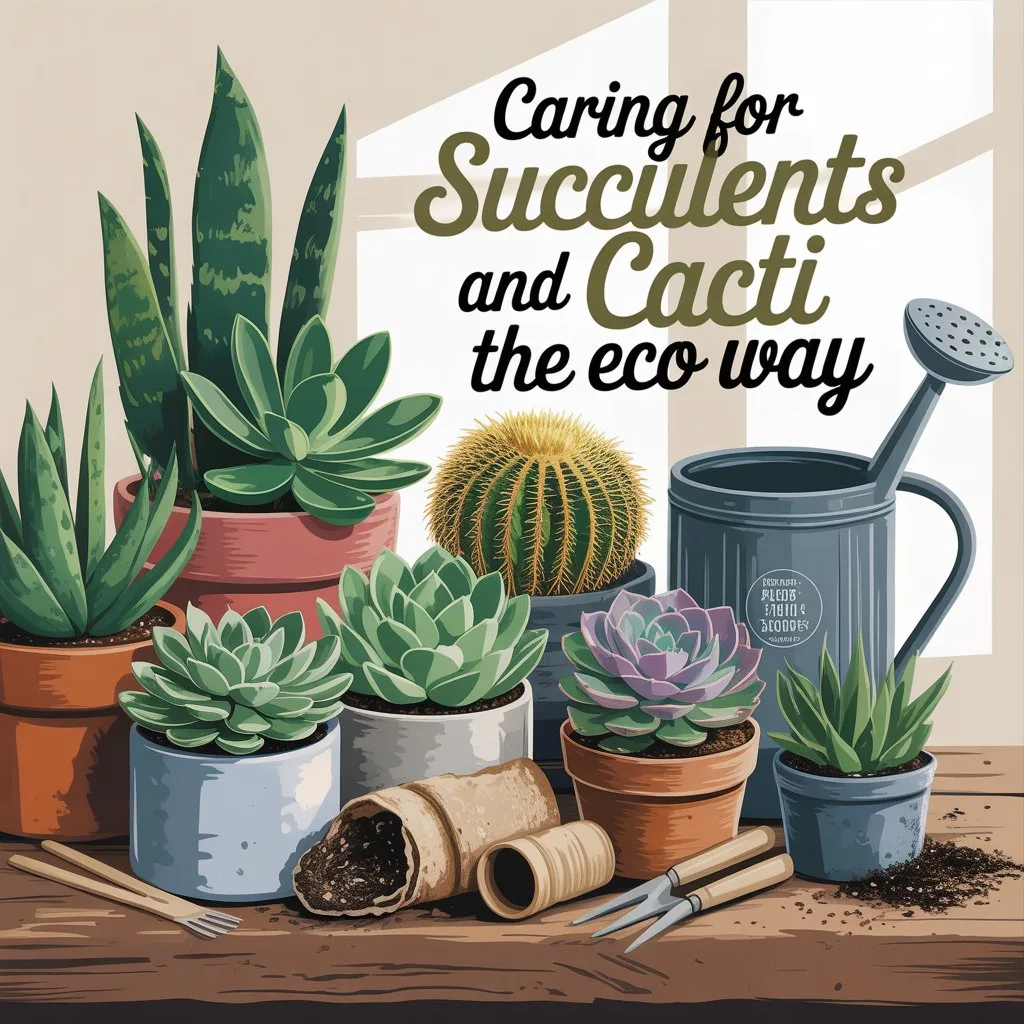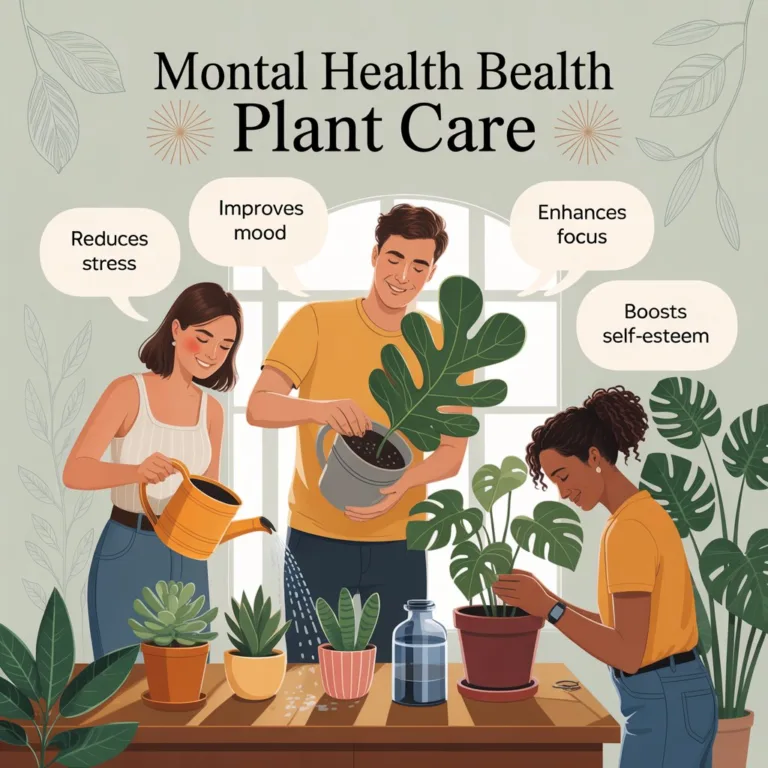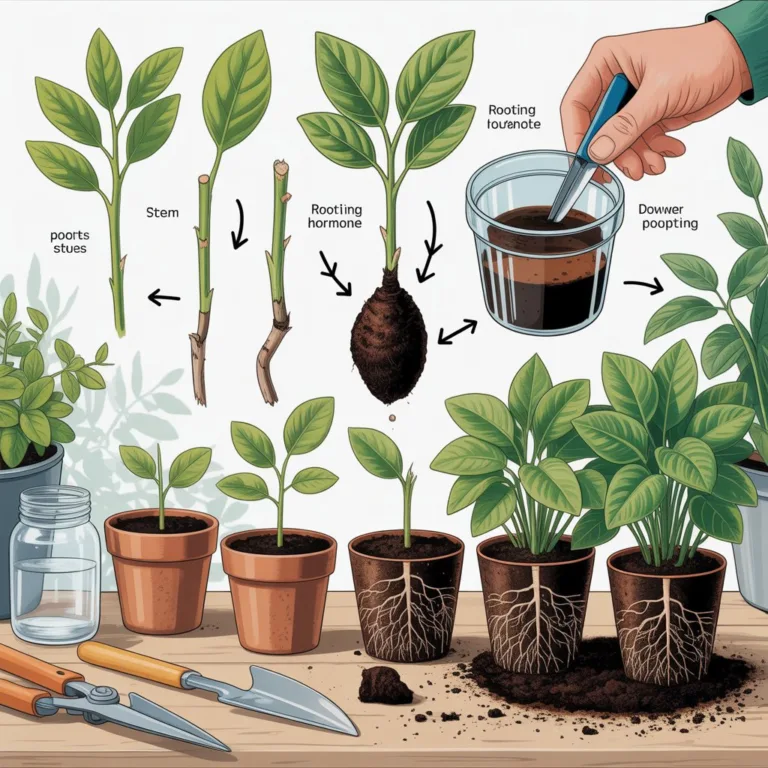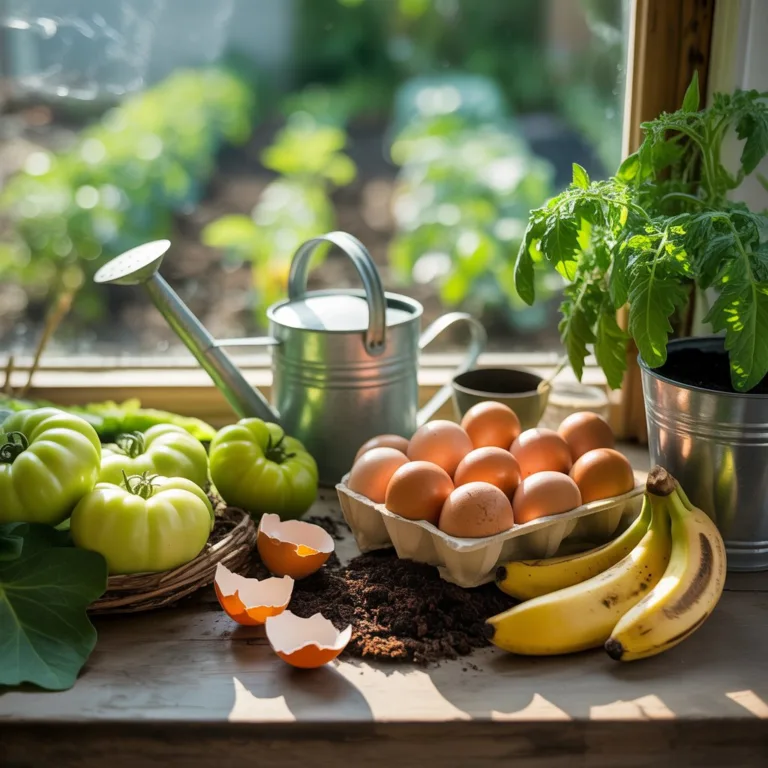Succulents and cacti have become symbols of sustainable beauty — resilient, low-maintenance, and perfect for any space. But while these hardy plants are often considered effortless to care for, nurturing them the eco way involves a deeper connection to nature and an understanding of their unique environmental needs. True eco-friendly plant care is about creating a balanced ecosystem that supports your plants without harming the planet.

By growing succulents and cacti sustainably, you not only ensure their long-term health but also contribute to environmental preservation. From water-saving techniques to using natural fertilizers and recycled containers, this mindful approach blends creativity, responsibility, and green living. Whether you’re new to gardening or an experienced plant enthusiast, sustainable care for succulents and cacti can turn your home or garden into a thriving, eco-conscious sanctuary.
Understanding the Nature of Succulents and Cacti
Succulents and cacti have evolved to survive in some of the harshest environments on Earth. Their thick, fleshy leaves and stems store water, allowing them to thrive in arid climates. This adaptation makes them naturally efficient at water conservation — a key trait that aligns perfectly with eco-friendly gardening principles.
Succulents encompass a wide range of species, including aloe, echeveria, jade plants, and haworthia, while cacti are a subset of succulents defined by their spines and ability to withstand extreme heat. Both types of plants benefit from similar care routines centered around sunlight, minimal watering, and well-drained soil.
Caring for these plants sustainably means replicating their natural environment using environmentally responsible materials and methods.
Choosing Eco-Friendly Containers and Soil
The foundation of sustainable succulent and cactus care starts with choosing containers and soil that respect both the plants and the planet.
Recycled and Natural Containers
Instead of purchasing new pots, consider repurposing containers you already have. Old tins, glass jars, wooden boxes, or broken pottery can all serve as unique, eco-friendly planters. Terracotta pots are another excellent option because they’re natural, porous, and biodegradable, allowing for proper airflow and moisture regulation.
For larger arrangements, use reclaimed wood planters or upcycled materials like bamboo, coconut shells, or even stone. Just ensure your container has drainage holes to prevent root rot.
Sustainable Soil Mix
A well-draining soil mix is essential for succulents and cacti, but many commercial mixes contain peat moss — a material with significant environmental costs due to habitat destruction during extraction. Instead, create your own sustainable soil blend using alternatives such as:
- Coconut coir (renewable and biodegradable)
- Coarse sand or perlite for drainage
- Crushed pumice or gravel for aeration
- Compost for natural nutrients
By mixing your own soil, you eliminate the need for synthetic fertilizers and reduce your garden’s carbon footprint.
Watering Wisely: The Eco Approach
One of the most common mistakes when caring for succulents and cacti is overwatering. In eco-friendly gardening, water is treated as a precious resource, so efficient watering practices are essential.
Less Is More
Succulents and cacti thrive on deep but infrequent watering. Let the soil dry completely between watering sessions to mimic natural drought conditions. This strengthens the roots and reduces water waste.
Rainwater Collection
Collecting rainwater is one of the most sustainable ways to hydrate your plants. It’s naturally soft and chemical-free, making it gentler on roots. Store it in clean containers or barrels and use it during dry periods.
Watering Techniques
Use a watering can with a narrow spout or a syringe to deliver water directly to the soil, avoiding the leaves. This reduces evaporation and prevents fungal issues. Grouping plants with similar water needs also helps conserve resources and maintain healthy growth.
Sustainable Sunlight Management
Succulents and cacti love sunlight, but their exposure should be managed carefully to prevent sunburn and dehydration.
Position your plants near bright windows or outdoor areas where they can receive at least 4–6 hours of indirect sunlight daily. If your space doesn’t get much natural light, use energy-efficient grow lights with LED bulbs — they consume less power and last longer than traditional lighting.
Rotating plants regularly ensures even growth and helps prevent them from stretching toward one direction. For eco-conscious gardeners, placing reflective surfaces near plants can help amplify natural light without using electricity.
Natural Fertilizers for Stronger Plants
Succulents and cacti don’t need heavy feeding, but a little nourishment helps them stay vibrant and resilient. Instead of chemical fertilizers that can harm the soil and environment, choose natural alternatives.
Homemade Compost Tea
Compost tea — made by steeping compost in water — provides essential nutrients in liquid form. Use it once a month to enhance soil vitality.
Banana Peels and Eggshells
Banana peels supply potassium, while crushed eggshells add calcium. Mix them into the soil or steep them in water for a mild, plant-safe fertilizer.
Coffee Grounds
Used coffee grounds can improve soil texture and add organic matter. However, they should be applied sparingly and mixed well to avoid compacting the soil.
These natural fertilizers support plant health without disrupting delicate ecosystems or contaminating water supplies.
Propagating Succulents and Cacti the Eco Way
Propagation — creating new plants from cuttings — is one of the most sustainable and rewarding ways to expand your garden. It eliminates the need for buying new plants, reducing demand for commercial production.
To propagate succulents, gently remove a healthy leaf or stem, let it dry for a few days until it forms a callus, and then place it in well-drained soil. For cacti, use sanitized tools to take cuttings, let them cure, and plant them once healed.
Reusing old trays, egg cartons, or coconut shells as propagation containers further reduces waste. Always label your cuttings using biodegradable tags made from bamboo or recycled paper instead of plastic markers.
Upcycling and Repurposing for Green Décor
Eco-friendly succulent and cactus care extends beyond maintenance — it includes how you display your plants. Instead of buying decorative planters or accessories, upcycle materials creatively.
Use driftwood, broken ceramics, or recycled metal objects as unique holders. Mason jars, tin cans, and wine corks can be turned into mini planters for small succulents. These artistic touches add character to your space while keeping waste out of landfills.
For wall-mounted displays, repurpose old frames or pallets to create vertical succulent gardens. They save space and promote natural air purification indoors.
Pest Control Without Chemicals
Even hardy plants like succulents and cacti can face pest problems such as mealybugs or aphids. Instead of using harsh pesticides, eco-friendly gardeners rely on natural pest control methods.
- Neem Oil: A natural insect repellent that’s safe for plants and beneficial insects alike.
- Soap Spray: Mix a few drops of biodegradable soap with water and spray lightly to eliminate pests.
- Companion Plants: Herbs like lavender or rosemary naturally deter insects while adding fragrance and biodiversity.
Encouraging beneficial insects such as ladybugs or lacewings can also maintain balance in your plant ecosystem.
Minimizing Plastic Waste in Plant Care
Plastic is one of the biggest environmental challenges in gardening. To minimize plastic use when caring for succulents and cacti, choose reusable, compostable, or biodegradable materials whenever possible.
Avoid plastic pots, synthetic fertilizers, and disposable plant labels. Instead, opt for glass misting bottles, bamboo plant supports, and fabric grow bags. When buying soil or compost, look for suppliers who offer bulk or refill options to reduce packaging waste.
You can also recycle plastic nursery pots by returning them to local garden centers or repurposing them for seedlings.
Seasonal Care with Sustainability in Mind
Succulents and cacti need adjustments in care throughout the year, but even these seasonal changes can follow eco-friendly principles.
- Spring and Summer: Focus on growth and propagation. Use natural fertilizers and rainwater for hydration.
- Autumn: Reduce watering and let the soil dry between sessions to prepare plants for dormancy.
- Winter: Move indoor plants to sunny windows and use thermal curtains or reflective panels to maximize natural warmth.
Avoid artificial heating or cooling methods when possible — simple environmental adjustments are both energy-efficient and beneficial to plant health.
Recycling and Reusing Old Plant Materials
Zero-waste succulent and cactus care includes thoughtful disposal of dead leaves or failed plants. Instead of throwing them away, compost them to return nutrients to the soil. Even dried-out plants can become natural decor in terrariums or craft projects.
Old soil can be rejuvenated by mixing it with compost and natural amendments. Terracotta pots with minor cracks can be mended using clay or reused as drainage fillers. Nothing needs to go to waste when creativity and sustainability go hand in hand.
Teaching Eco Gardening Through Succulents and Cacti
Succulents and cacti are perfect tools for teaching sustainable gardening practices. Their resilience and adaptability make them ideal for introducing children and beginners to eco-friendly care routines.
Schools and community centers can organize workshops that demonstrate propagation, composting, and upcycling containers. These activities foster environmental awareness and appreciation for low-impact gardening.
By sharing knowledge and encouraging others to adopt eco-friendly plant care, we collectively contribute to a greener future.
Growing in Harmony with Nature
Caring for succulents and cacti the eco way is about more than keeping plants alive — it’s about nurturing a deeper harmony with nature. Every sustainable choice, from using rainwater to crafting homemade fertilizers, contributes to a cycle of renewal and respect for the environment.
By cultivating mindfulness in how you grow, water, and nurture your plants, you become part of a global movement toward greener living. The beauty of eco-friendly plant care lies in its simplicity — giving back to nature while enjoying its endless rewards.
Let your succulents and cacti remind you that even small, sustainable habits can lead to lasting change.

Sofia Greenfield is a sustainable gardening expert and environmental educator who inspires families and urban gardeners to cultivate green spaces responsibly. She shares practical tips on growing vegetables, herbs, and flowers using eco-friendly and recycled materials, emphasizing the joy of gardening while protecting the planet.



